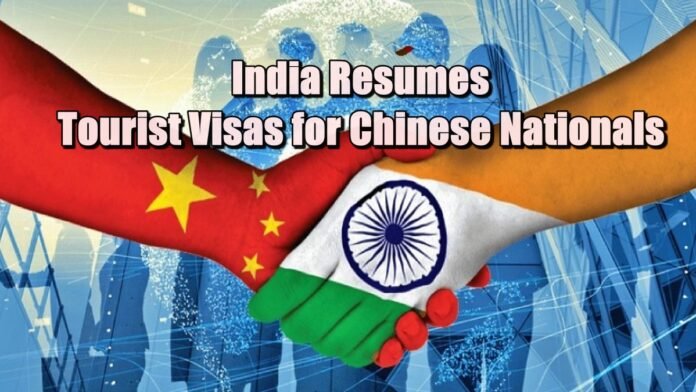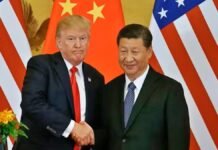
Key Highlights:
- India to reopen tourist visa services for Chinese nationals starting July 24, 2025.
- Ban imposed in 2019 due to the COVID-19 pandemic and frozen ties post Galwan clash lifted.
- Move signals a renewed effort to normalize India-China relations after years of border tensions.
- Step follows troop withdrawal agreements in 2024 and high-level diplomatic meetings.
- Plans to resume direct flights and the Kailash Mansarovar Yatra also announced.
New Delhi: In a significant step toward normalization of ties with Beijing, the Indian government on Wednesday announced the restoration of tourist visa services for Chinese citizens, ending a restriction that had remained in place since 2019.
The Indian Embassy in Beijing confirmed the decision, declaring that tourist visa facilities would resume from July 24, 2025. This marks the first time in five years that ordinary Chinese travelers will be allowed to visit India for leisure, following strained relations due to both the COVID-19 pandemic and heightened military tensions in eastern Ladakh.
“A duly signed passport withdrawal letter will be required to apply for passport return at the Indian Visa Center in Beijing,” the Embassy statement said.
Background: From Pandemic Shutdown to Galwan Valley Clash
India had suspended tourist visas for China in early 2020, citing COVID-19 concerns. However, the rift between the two nations deepened after the violent Galwan Valley clash in June 2020, in which troops from both sides suffered casualties. It was the worst border incident since the 1962 India-China War.
Over the next several years, diplomatic and military channels engaged in multiple rounds of negotiations, resulting in disengagement from flashpoint zones like:
- Pangong Lake
- Galwan Valley
- Hot Springs
- Depsang and Demchok (2024 troop withdrawal agreement)
Normalization Efforts After the Kazan Summit
Signs of thaw were visible after an important summit between Prime Minister Narendra Modi and President Xi Jinping in Kazan, Russia, in late 2024. That meeting marked the first bilateral exchange since the Galwan incident and laid the groundwork for easing tensions.
Key outcomes of the diplomatic push include:
- Commitment to increase people-to-people contact
- Resume direct air connectivity between major cities
- Reopen the sacred Kailash Mansarovar Yatra, a popular pilgrimage suspended since 2020
Diplomacy Through Travel and Trade
China had already resumed issuing visas to Indian students, businesspersons, and professionals in recent years. With India now reciprocating by reactivating tourist visas, both sides appear poised to reclaim pre-2020 levels of engagement.
India’s External Affairs Minister S. Jaishankar, during his recent trip to Beijing, noted that while complex issues remain, both countries are ready to move forward “through dialogue and normalized exchanges.”
A Symbolic but Strategic Move
Though resuming tourist visas may appear like a procedural shift, it holds larger significance in the context of India-China relations that have remained frozen for much of the past five years. It signals Delhi’s openness to diplomatic rebalancing — without necessarily compromising strategic concerns related to border security.
Timeline of India-China Diplomatic Thaw
| Event | Date | Significance |
|---|---|---|
| COVID-19 Visa Suspension | January 2020 | India halts tourist visa issuance to Chinese citizens |
| Galwan Clash | June 2020 | Major military standoff; bilateral ties worsen |
| Troop Disengagement Begins | 2021-2024 | Gradual pullback from Pangong, Galwan, Hot Springs |
| Depsang/Demchok Withdrawal | October 2024 | Latest breakthrough in border negotiations |
| Modi-Xi Meeting (Kazan) | November 2024 | First in-person talks since Galwan |
| India Resumes Visas | July 24, 2025 | Symbolic reset in diplomatic & people-to-people ties |
What Next?
With the restoration of tourist visas, officials from both countries hint at additional confidence-building measures, including:
- Bilateral trade meetings
- Academic and cultural exchanges
- Enhanced border management talks
The resumption of the Kailash Mansarovar Yatra not only a religious journey but also a cultural bridge — is expected to draw thousands of pilgrims once restarted.




















































